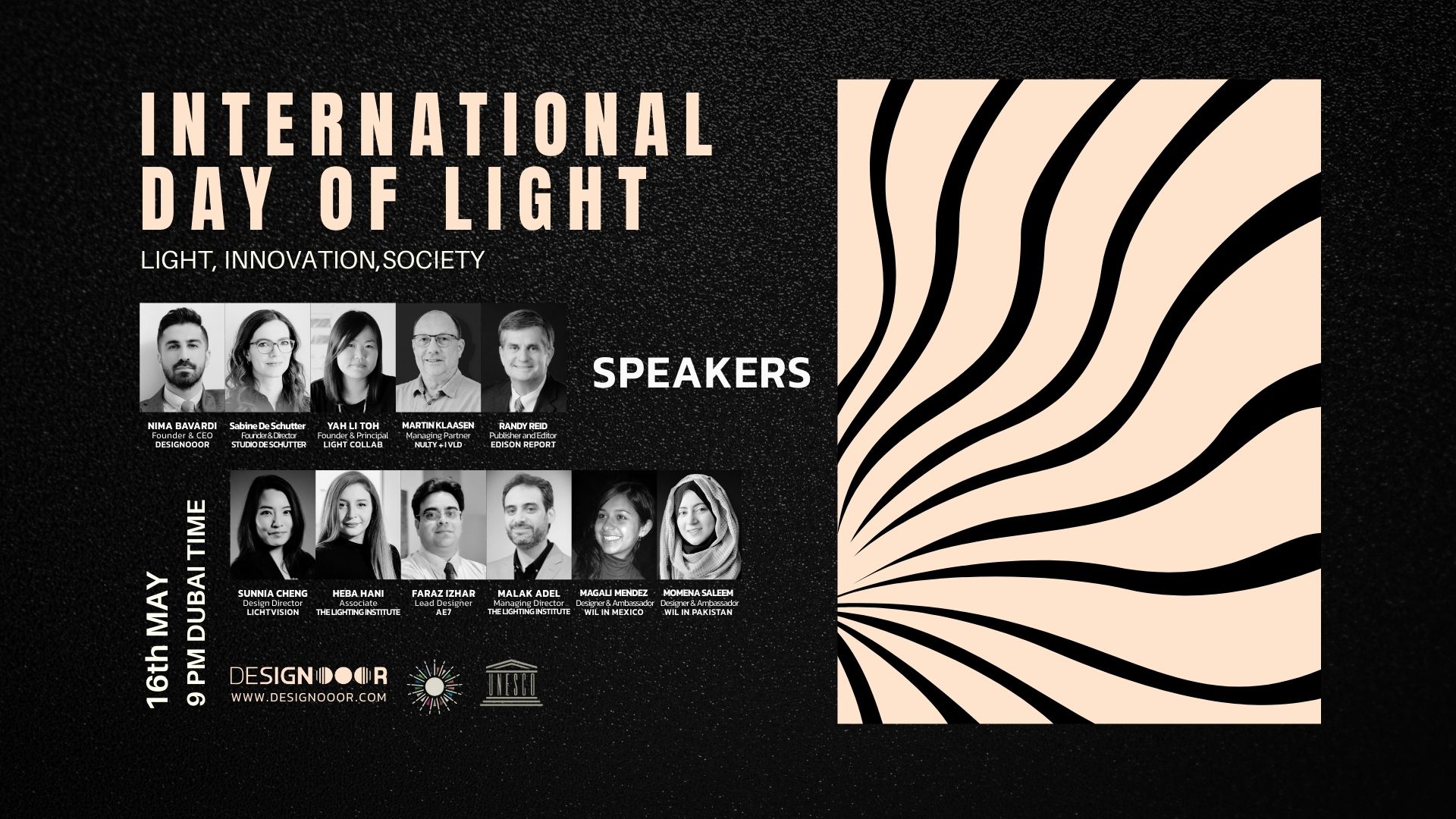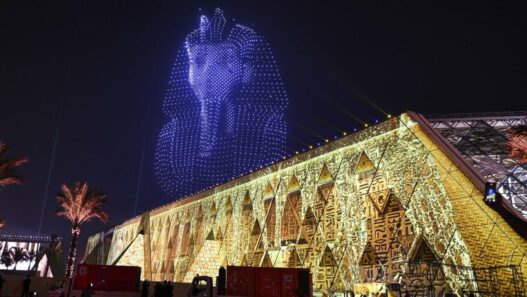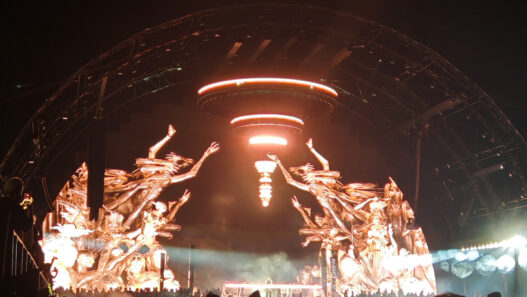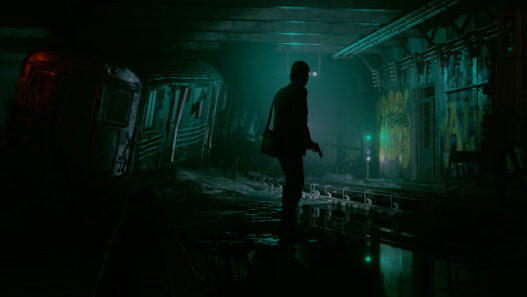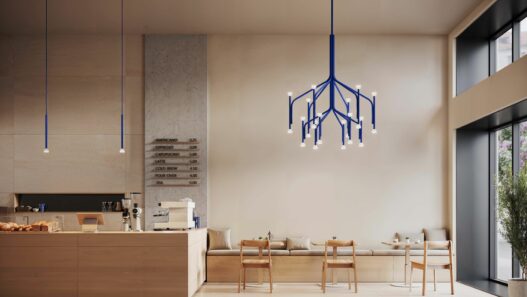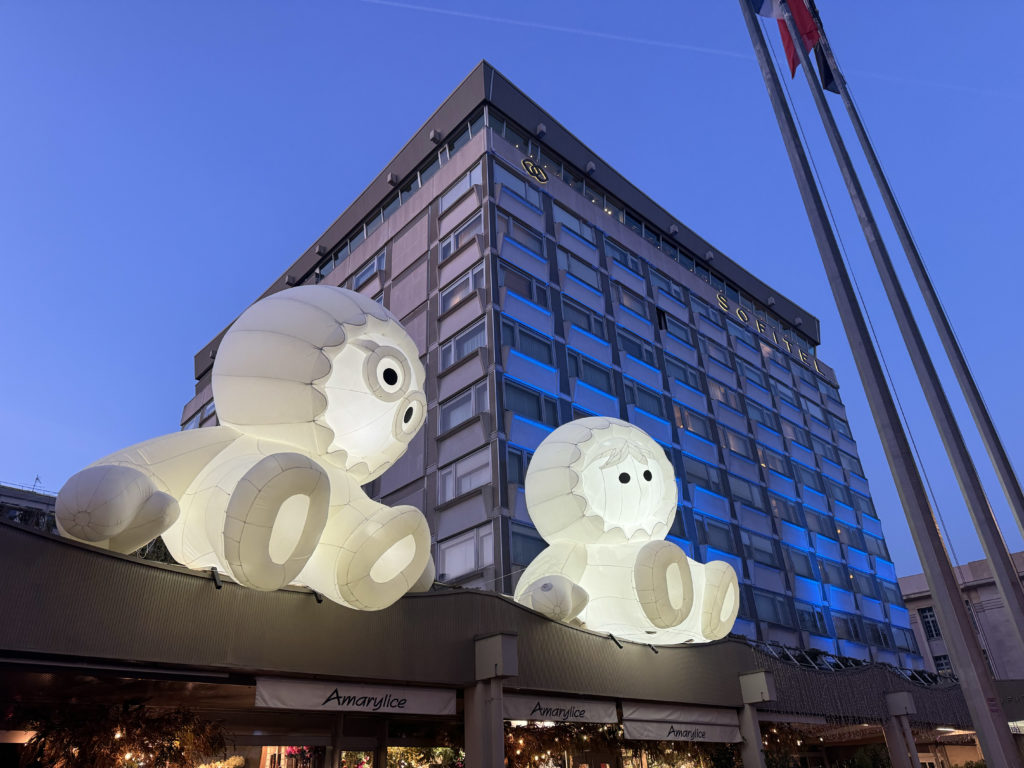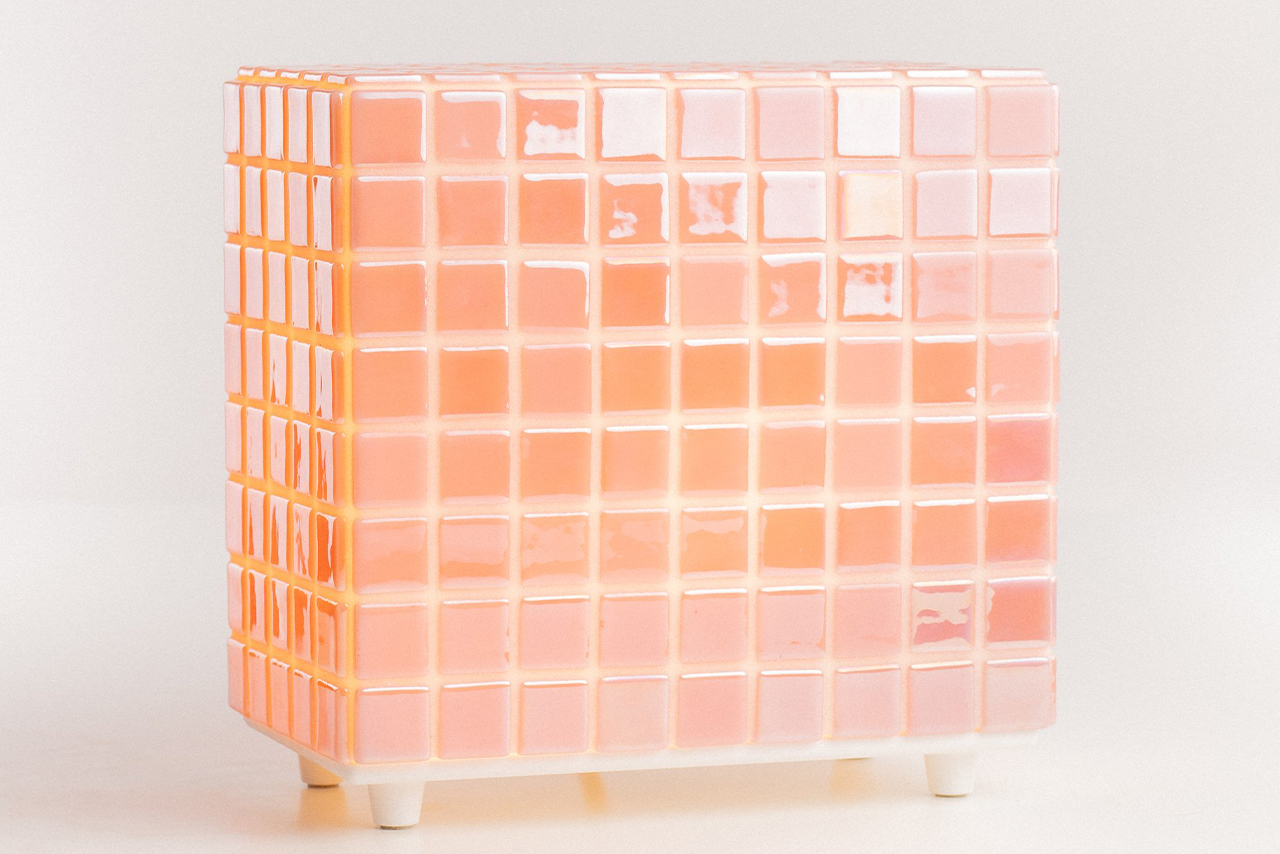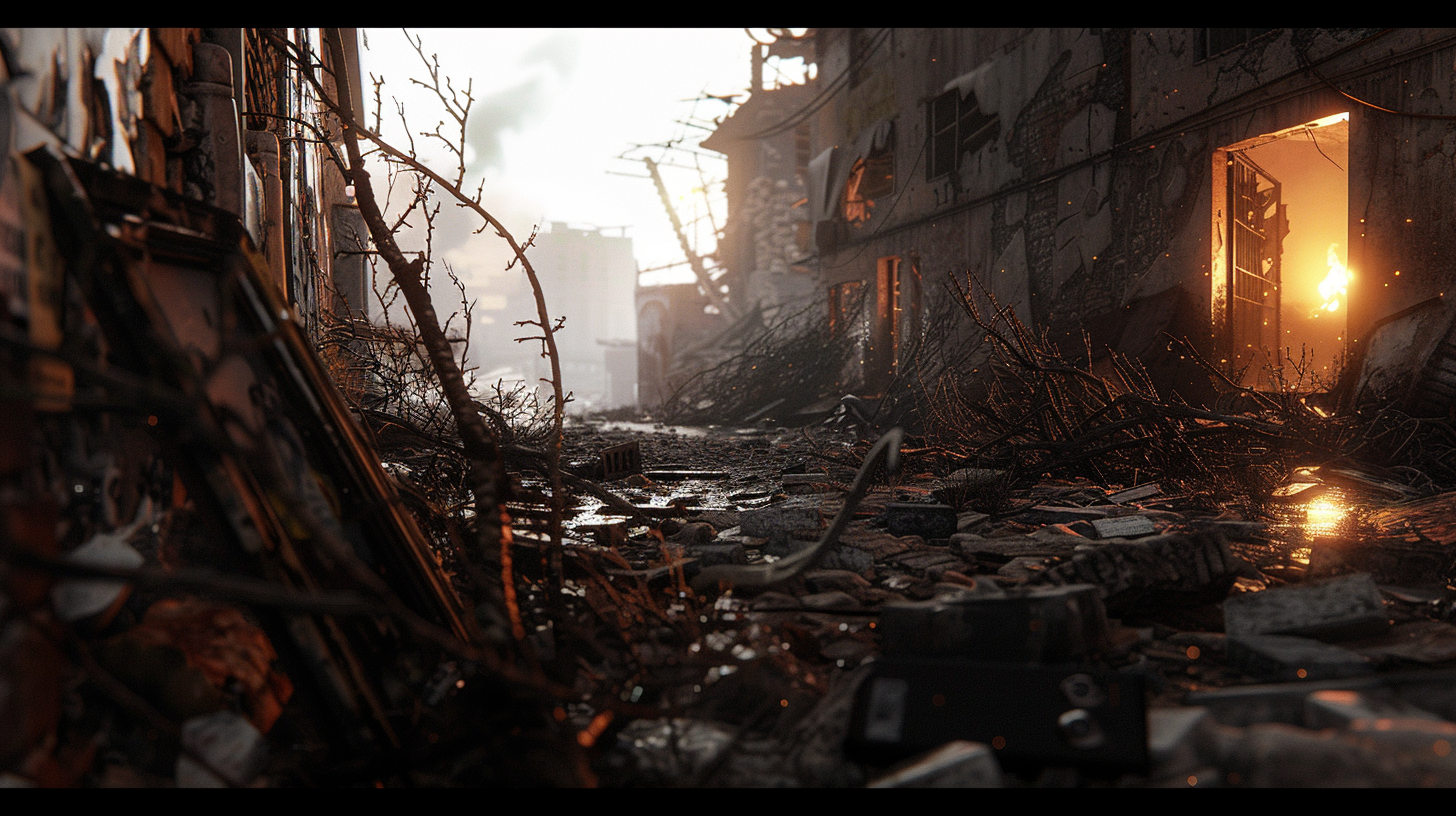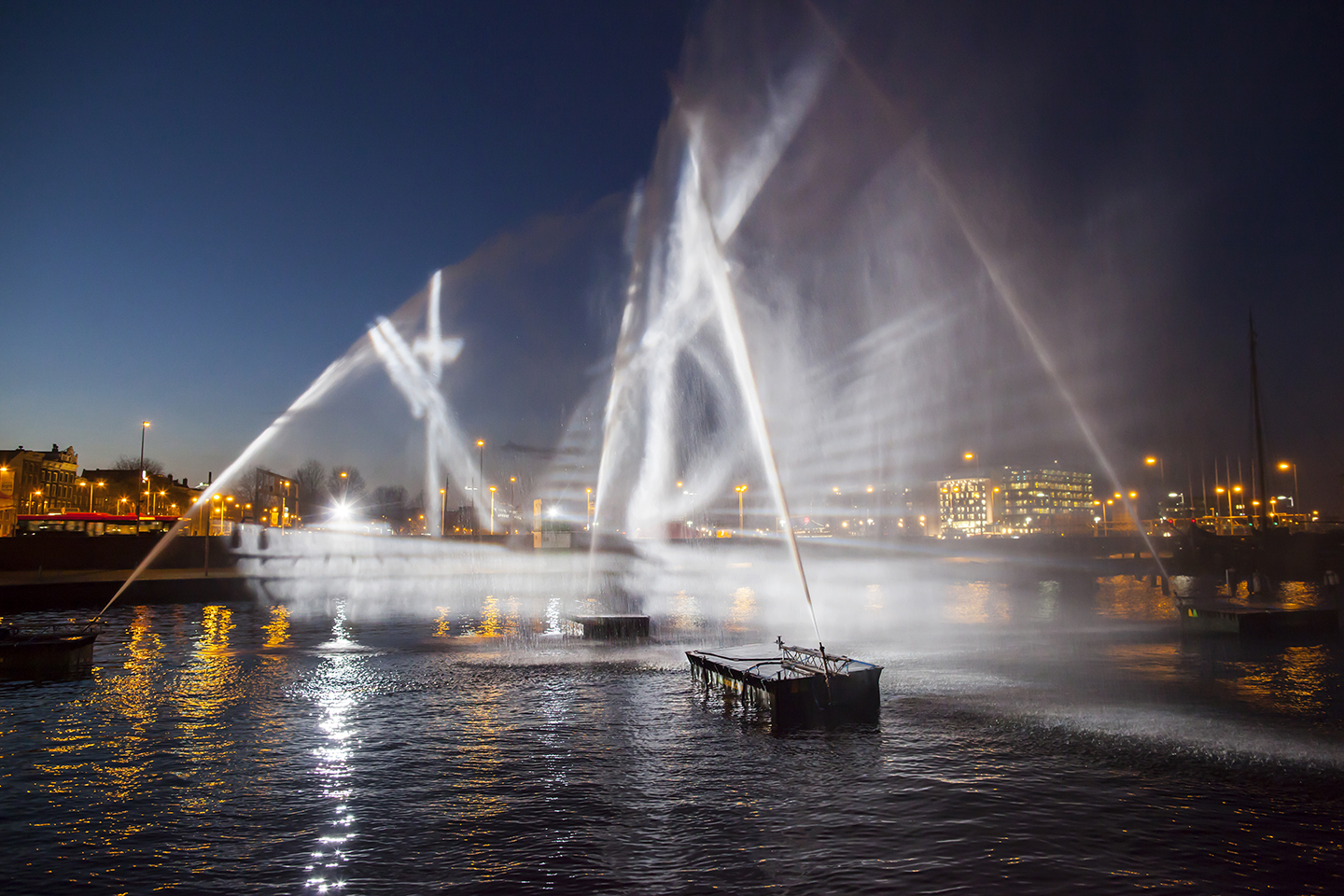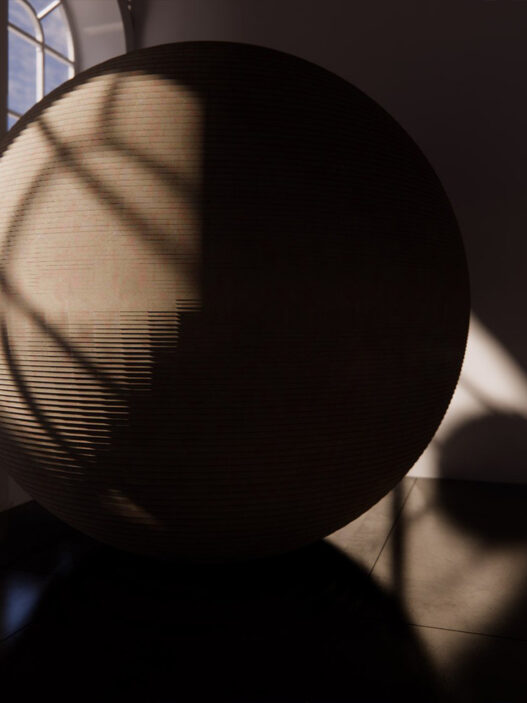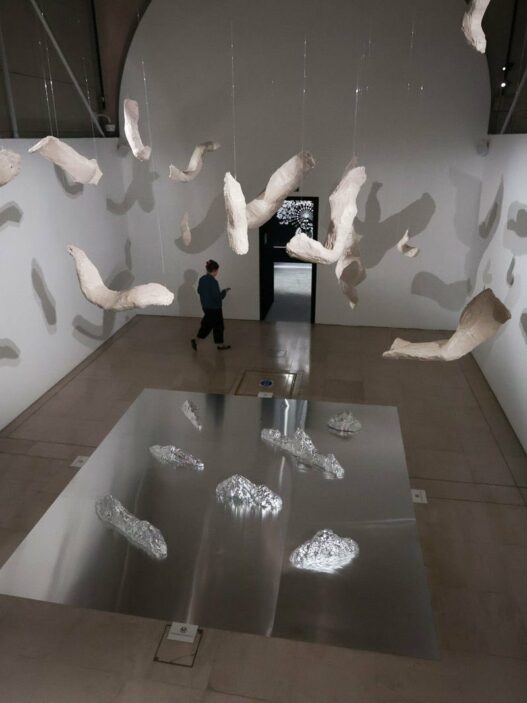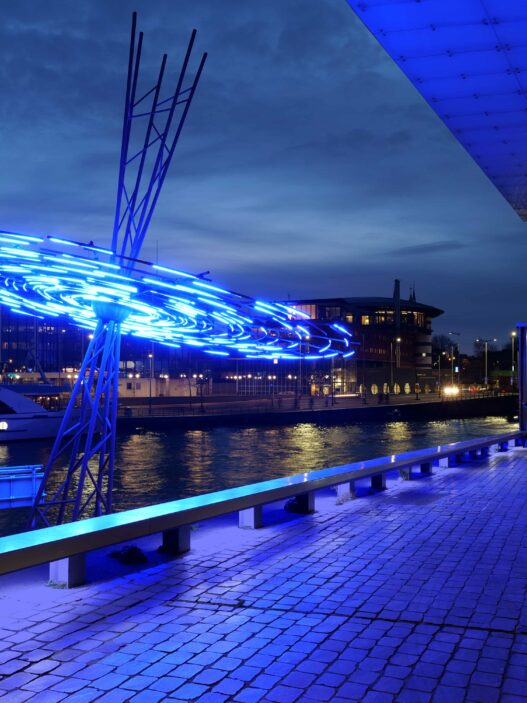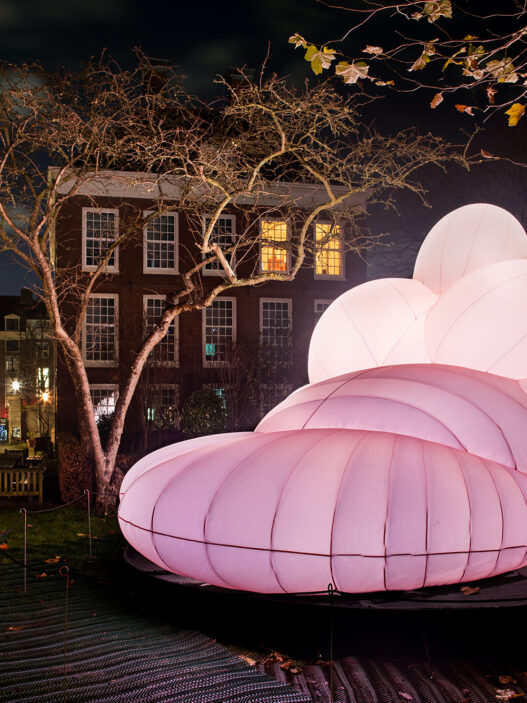The lighting design behind the Anooki installation is far more than a technical solution or an aesthetic embellishment, it is an act of storytelling through luminance, an atmospheric choreography where light is both medium and message. What appears at first glance to be a pair of inflatable characters glowing in the dark quickly reveals itself, under closer scrutiny, to be an intricate study in emotional semiotics. These luminous figures, seemingly made of air and innocence, are not simply “lit”; they are brought to life by light. The designers have employed internal illumination not for dramatic emphasis, but as an existential trait, light as breath, light as presence. Their glow is uniform yet pulsating with narrative tension, like mythic children pulled from an ancient folktale and dropped gently into our digital century.
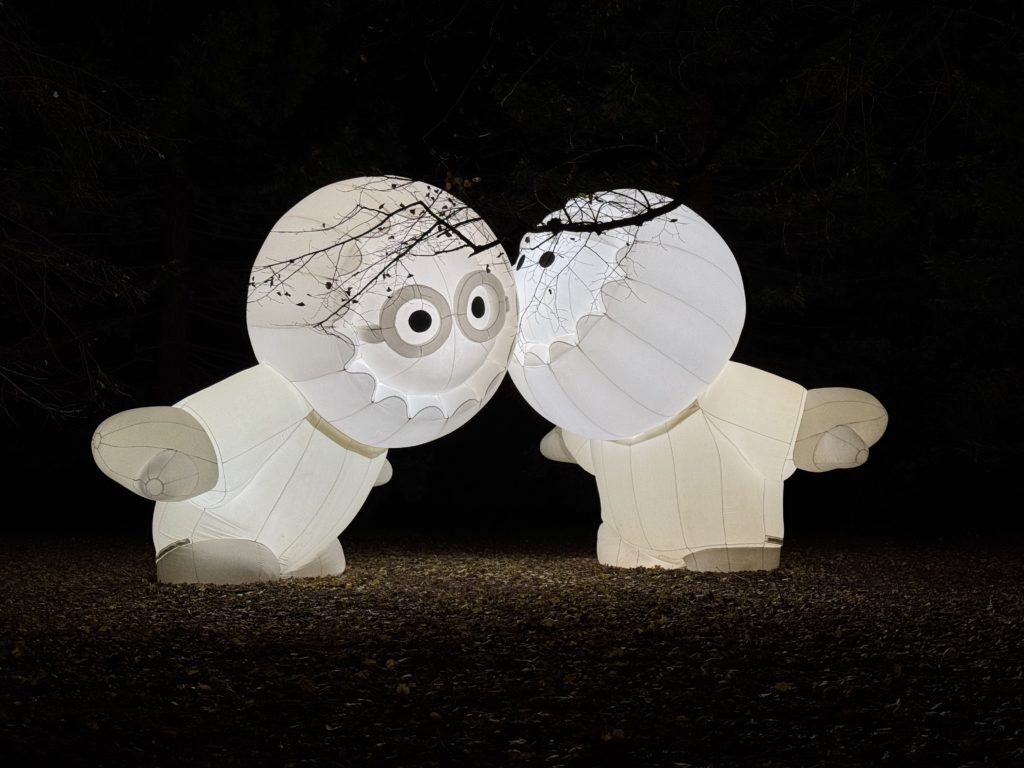
This is not illumination for visibility; it is illumination for meaning. The light does not model the form with theatrical shadows or gradient drama, it seeps gently through the surface like memory through time. It renders them ethereal, disembodied from gravity, floating not just physically but metaphorically. They are dream fragments, and their lighting design understands this. There are no harsh contrasts, no directional spotlights to declare intention; instead, we are given a constant, womb-like radiance, which wraps the figures in a timeless, almost prenatal comfort. This choice aligns closely with their behavioral gestures. the way one leans, the other hovers, how they bend toward each other or seem to embrace mid-air, soft movements amplified by a light that never interrupts but always supports. Their glow becomes an extension of their emotional vocabulary.
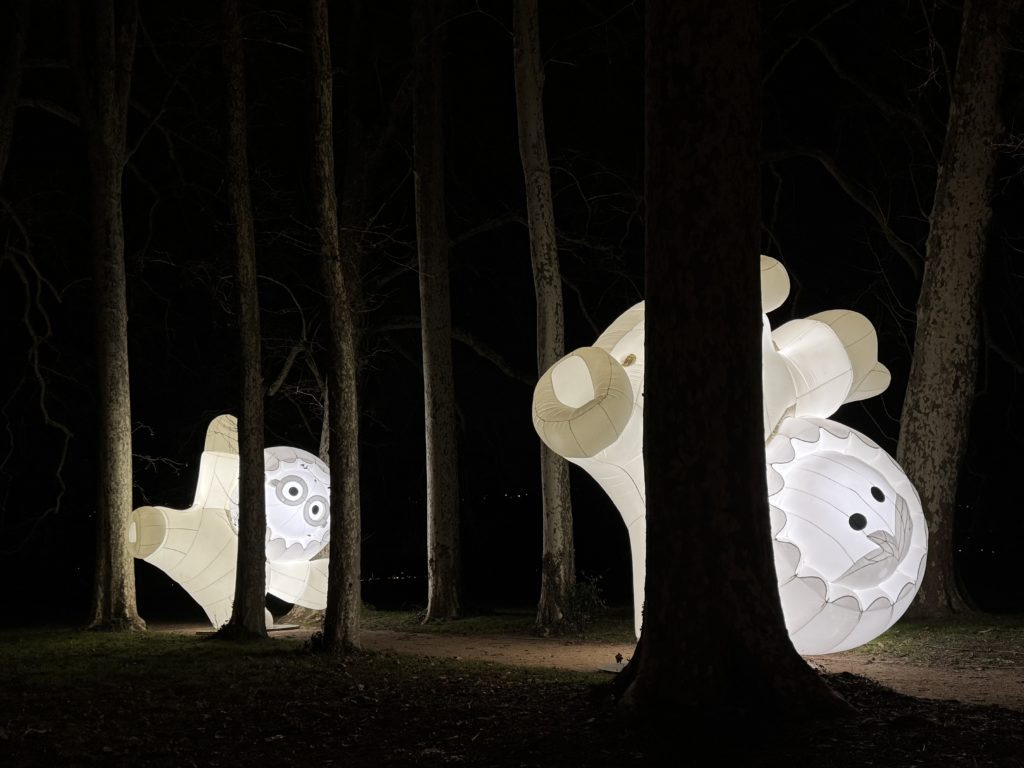
What sets this installation apart is how its light engages not only with its object, but with the public. This is not an artwork meant to be watched in silence and reverence; it invites interaction, mimicry, and touch. Children chase their shadows beneath the characters, adults photograph themselves mirroring their gestures. arms outstretched, faces turned upward in an unspoken dialogue. And in that, the lighting serves yet another purpose: it dissolves the threshold between object and observer. The softness and accessibility of the glow, a light without intimidation, flattens hierarchies. There is no pedestal here, no distance between sculpture and spectator. The design draws people in not just spatially but emotionally, fostering a kind of participatory kinship. It’s no coincidence that viewers from all ages gather, laugh, imitate, and dwell beneath them, the light has made space feel safe, inviting, even sacred.
Yet for all its success, the lighting could push its poetics further. The consistency of intensity, while conceptually coherent, sometimes forfeits the opportunity for rhythm, breath, modulation. The characters seem suspended in a single emotional state, when perhaps a gentle flicker, a pulse of dimming and rising, might evoke more complexity: a blush of affection, a moment of hesitation, the echo of memory. Still, the restraint in the lighting design is also a kind of statement: in a world obsessed with spectacle, here is a light that listens more than it speaks. It lets form, movement, and human proximity tell the story. These aren’t just inflatables, they are light-born entities, and the lighting design understands that deeply. It doesn’t overpower. It translates.
Brand : Inook
Designer : Moetu Batlle, David Passegand
